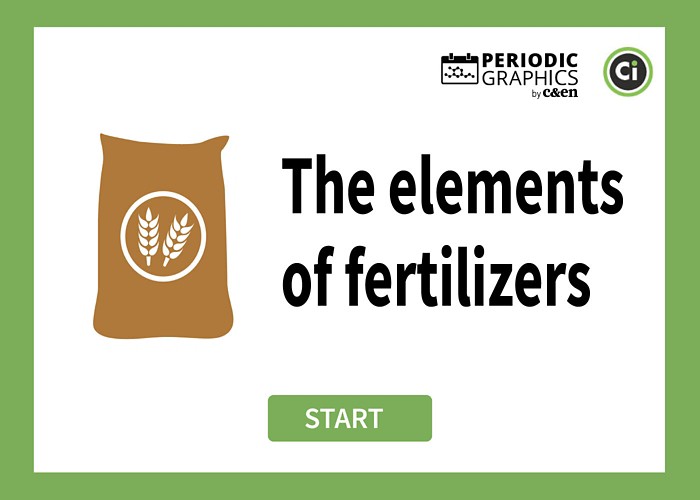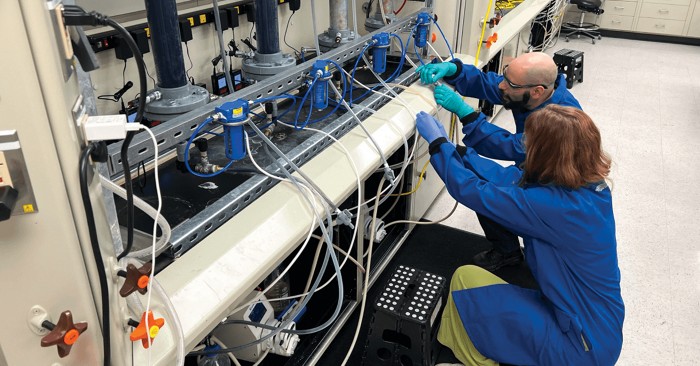Advertisement
Grab your lab coat. Let's get started
Welcome!
Welcome!
Create an account below to get 6 C&EN articles per month, receive newsletters and more - all free.
It seems this is your first time logging in online. Please enter the following information to continue.
As an ACS member you automatically get access to this site. All we need is few more details to create your reading experience.
Not you? Sign in with a different account.
Not you? Sign in with a different account.
ERROR 1
ERROR 1
ERROR 2
ERROR 2
ERROR 2
ERROR 2
ERROR 2
Password and Confirm password must match.
If you have an ACS member number, please enter it here so we can link this account to your membership. (optional)
ERROR 2
ACS values your privacy. By submitting your information, you are gaining access to C&EN and subscribing to our weekly newsletter. We use the information you provide to make your reading experience better, and we will never sell your data to third party members.
Agriculture
Reactions: Using almond shells in fracking, remembering William J. le Noble, and reflecting on science in stories
May 4, 2024
| A version of this story appeared in
Volume 102, Issue 14
Letters to the editor
Almond shells for oil-field applications

Mostly a large waste stream to almond growers, almond shells and hulls turn out to have many commercial potentials, as mentioned in the article “Can Chemists Turn California’s Almond Trash into Sustainable Treasure?” Having worked in the oil industry for many years, I believe that almond by-products, especially almond shells, can be a treasure for the oil-field business as well. Chemically and mechanically close to almond shells, walnut shells (ground or crushed) have been used, for example, as the proppant particles in hydraulic fracturing (fracking) operations: the walnut shell particles “prop” open the fractures created during the fracking treatments to provide efficient conduits for oil and gas to flow from the reservoir to the well bore. The similarity between the two types of nut shells should encourage the oil-field chemical suppliers to use almond shells as an alternative source for their proppant manufacturing.
Leiming Li
Sugar Land, Texas
William J. le Noble
I read with sadness about the passing of William J. le Noble in the March 25 issue of C&EN (page 37). In the obituary, his son describes his father by saying that he “loved his profession.” I can affirm this statement to be true.
When I was a senior undergraduate chemistry major at SUNY Stony Brook in 1987, I took an advanced spectroscopy course with Dr. le Noble. From day 1 in the course, I could tell that Dr. le Noble loved his profession and especially loved physical organic chemistry. He brimmed with excitement and enthusiasm every day that he taught. His course was less about grading and finding errors and more about expanding the thinking and chemical imagination of his students. I remember one day early in the course when he gave us the molecular formula C5H6 and nuclear magnetic resonance spectroscopic data (two carbon chemical shifts and one proton chemical shift) for an “unknown” molecule and asked the students to propose a structure by the next class. Such a simple compound it must be! But I struggled along with the rest of the class to come up with a structure that made any sense. When he revealed it to be the highly strained molecule [1.1.1]propellane, a molecule with inverted carbon atoms (what?!?), I nearly fell out of my chair. I was hooked on physical organic chemistry from that point on. Nowadays, when I teach students in my Advanced Organic Chemistry course, I try my best to emulate his style of teaching. I am certain he had similar positive influences on the lives of so many others over the course of his career.
Gary W. Breton
Mount Berry, Georgia
Storytelling and science
I found your editorial in the April 8 issue of C&EN of great interest (page 2). Most interesting was the comment “people like stories” and referring to “a well-crafted tale.” This letter provides an example that supports the thought expressed in the editorial.
I am thinking of novels, especially mysteries that I love reading. The mysteries by Andrea Penrose take place in England between the 1800s and the 1830s (the Regency period). These mysteries include important science, technology, engineering, and mathematics (STEM) innovations and inventions as a significant element in the crimes, and not merely a mention.
Scientific and mathematical thinking is featured in each novel. STEM innovations and inventions included a revolutionary steam-powered engine, prototype locomotive that spurred the development of the railroad, electricity in the form of early voltaic batteries, the use of mathematical skills and genius in developing the computing engine (a precursor to the modern computer) in order to develop accurate mathematical tables, and the scientific study of botanical medicine. The attempt to invent a propeller-based propulsion system for oceangoing ships rather than sails failed, as the required scientific progress was lacking. In the “Author’s Note” of Murder at the Merton Library, Penrose says she is “fascinated by how many failures, dead ends and clever prototypes that almost work result before the ‘ah-ha’ moment when a breakthrough takes place. This pattern—innovation rarely moves in a straight line—is, of course, not unique to the Regency and remains common to this day.”
A main character possesses a brilliant scientific mind. He is a noted, highly respected chemist with a great interest in forensic science, and he conducts chemical experiments in each story while seeking solutions to the crimes.
The novels are very good mysteries as well as a lot of fun.
Howard Kimmel
East Brunswick, New Jersey




Join the conversation
Contact the reporter
Submit a Letter to the Editor for publication
Engage with us on Twitter